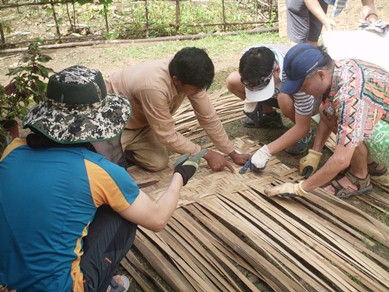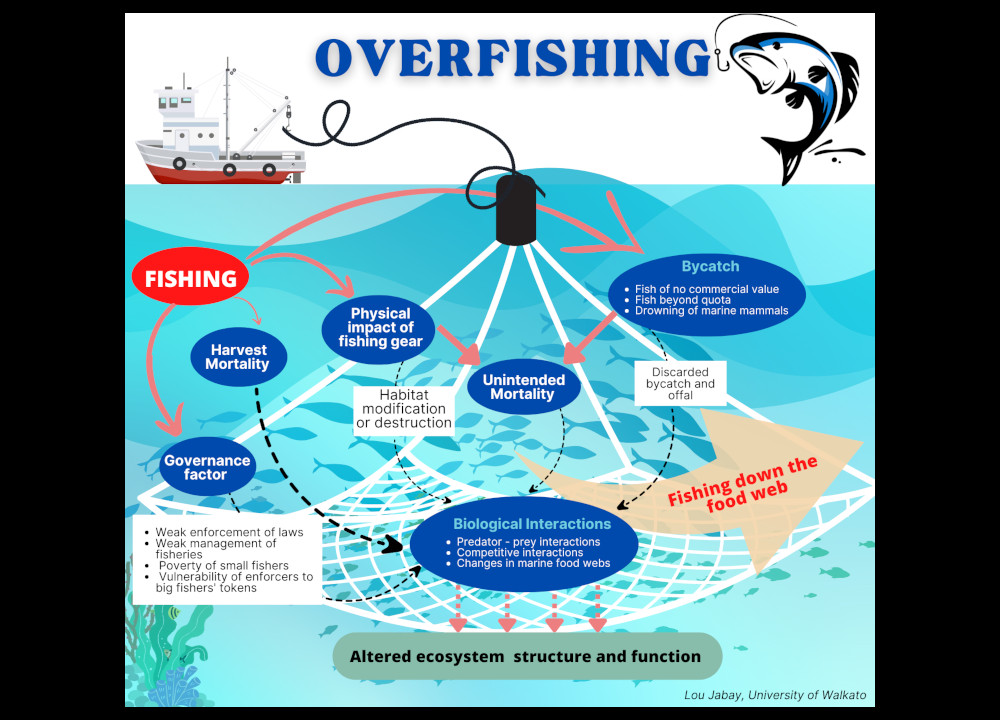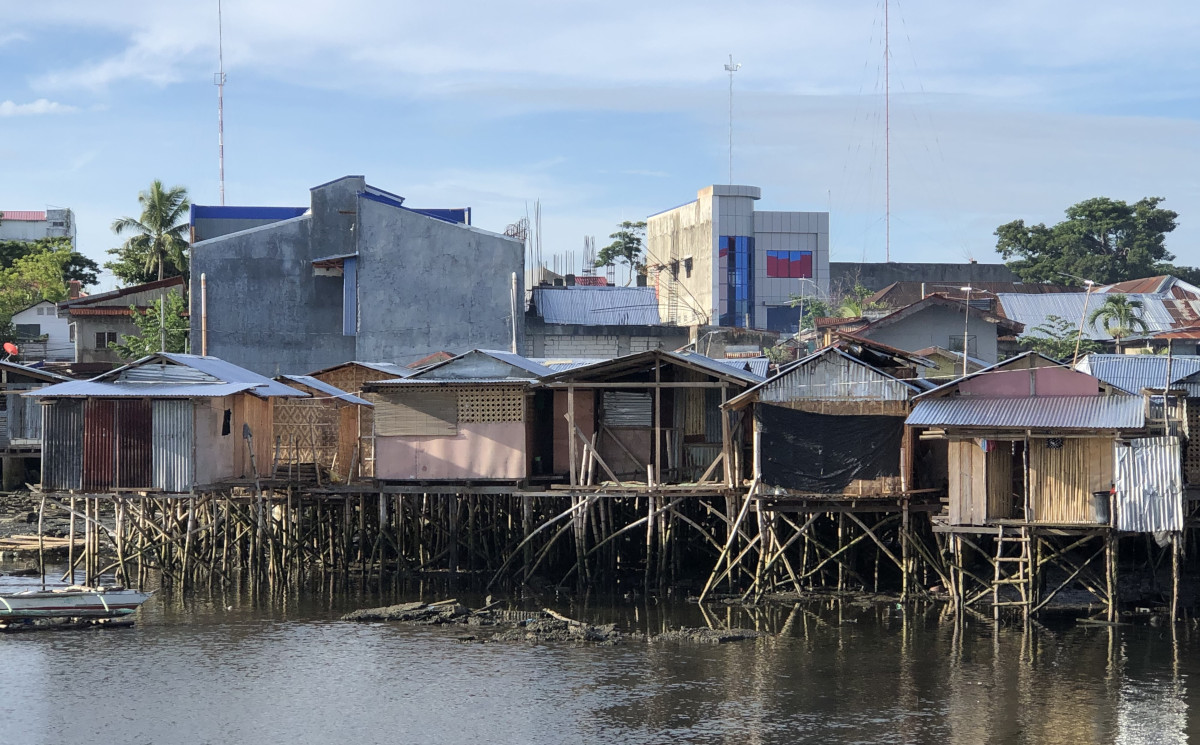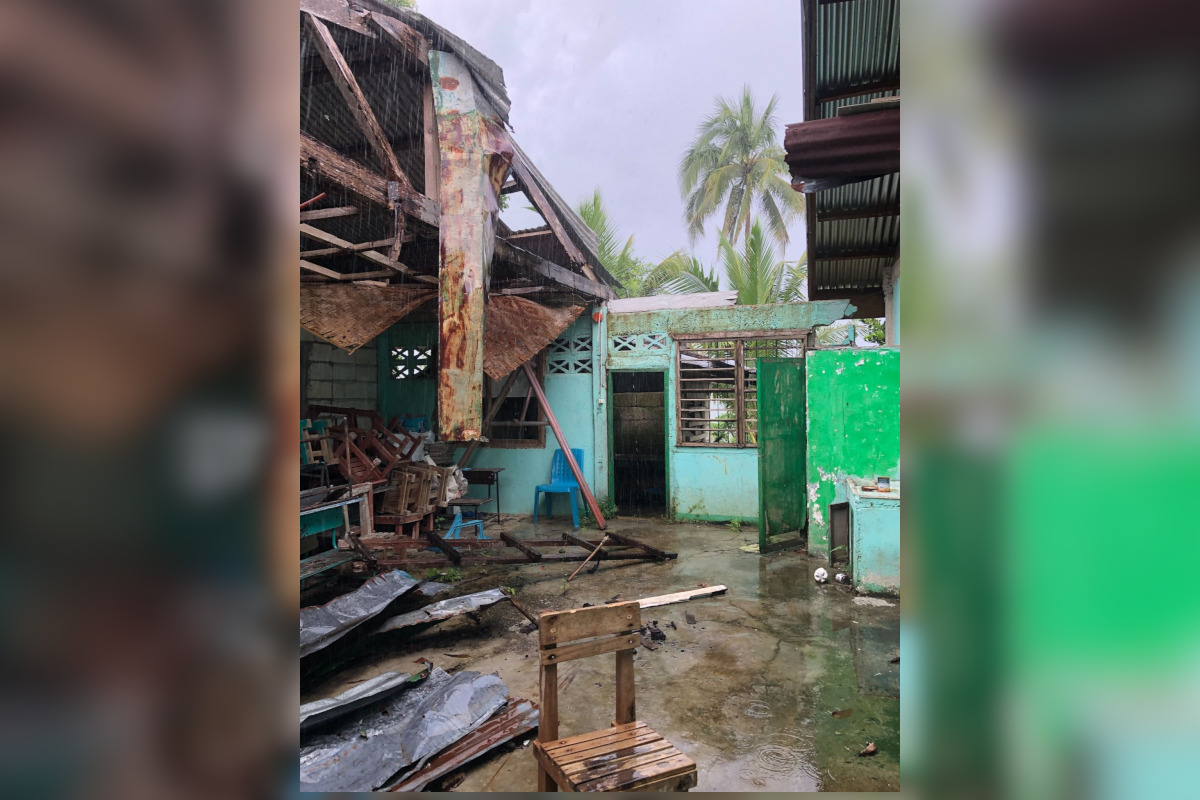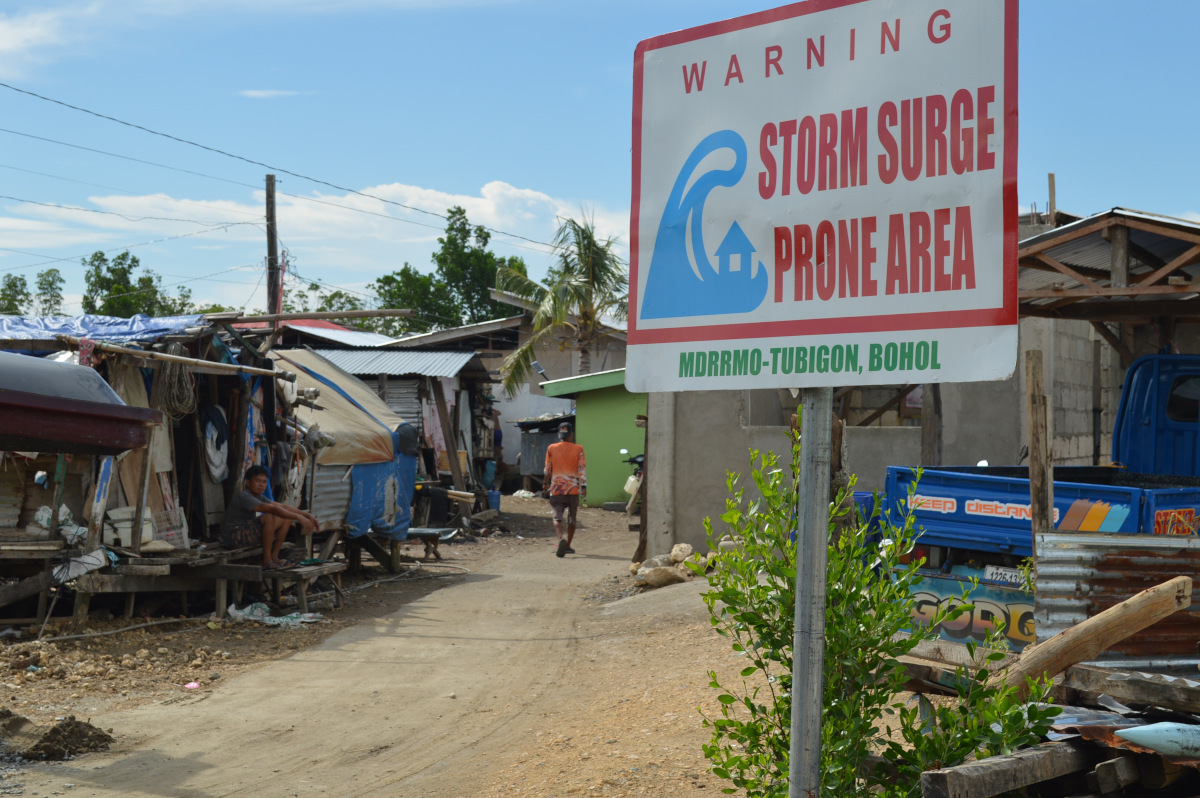By COOPER RESABAL, VERA Files
MARIBOJOC, Bohol – A middle-aged woman sweeps her hands across what appears to be a mosaic painting of stylized young seedlings on the front wall of a bamboo cottage in Toril village in this town.
“This was made by volunteer tourist students of the Asian Institute of Tourism (AIT) and of the UP Pre-Med Society who named this ‘Door of New Beginnings,’ a way of giving us hope for a new life after a disaster,” said Ma. Elena Borcelas, referring to a community-based rebuilding effort after a powerful earthquake struck Bohol and parts of the central Philippines in 2013.
A few meters from the Toril village center, another bamboo cottage displays a mosaic painting door that shows a nymph-like image and Korean characters.
This was given by volunteer students and artists of the Imagine Peace South Korea (IPSK) to the family members of Serg Nino Talinda who lost their mother when an avalanche caused by the 7.2 intensity earthquake almost two years ago buried her alive.
The October 15, 2013 earthquake killed more than 200 people, destroyed houses and toppled centuries-old churches and other infrastructure in Bohol province.
A handful of families who lost their homes in Toril are now living in bamboo houses built under a unique disaster recovery program that not only provides them ‘houses of hope’ but also offers visitors an experience in Boholano cultural and nature pathways.
The program is spearheaded by the Bol-anon Village Cultural and Nature Trails (BVCT), which was set up in 2014 as a response to the disaster.
“This ‘Door of Hope’ symbolizes our expression of solidarity and friendship with the Boholanos, with the family victims in particular, which we hope will spur them to pick up the pieces of their lives after the traumatic experience,” IPSK delegation head Maria Younsin Lim told the Toril folks during one of their visits.
“When Koreans came to my house made totally of bamboo, nipa and wood, they touched the woven bamboo walling, the nipa roofing and the rounded wood posts, and asked, ‘All handmade?” narrated Danny Macalam, a carpenter and wood craftsman who built the house that withstood the powerful quake.
“We want our houses to be like this,” said an artist who accompanied the IPSK delegation. She pointed out that the organic materials, design and workmanship made the house withstand the earthquake, and could be made resilient to typhoons too.
The design of the bamboo cottages typifies the interior Bohol island “payag” (hut) which is basically a 2-level bamboo and wooden cottage. It uses bamboo or wooden sticks as flooring, beaten or woven bamboo walling, and nipa roofing. “It has features that make it airy, and stands on stilt-like posts usually located on rolling hills,” Macalam noted.
Barangay councilor Ricardo Barbanida, a caretaker of a house that was damaged by the quake, never had a house of his own until the AIT volunteer students, in coordination with the BVCT, gave him a bamboo cottage on the basis of his volunteer work in the early construction of the houses.
His cottage displays a mosaic painting called “Door of Freedom,” which AIT professor Richard Gonzalo said symbolizes the “liberated” thinking and policies of the U.P.-based donors.
The House of Freedom now features an organic vegetable and flower garden and a typical wooden terrace where guests are taught some crafts like puso (hanging rice)-making, tablia (chocolate)-making, puko (rice container) or placemat weaving. It is also used for home stay.
All the cottage beneficiaries in the village contributed labor, wood, and other materials to complete the Houses of Hope, Freedom, and New Beginnings.
According to a BVCT report, from January, 2014 up to early 2015, it has “facilitated the construction of four Bol-anon payag-based cottages and supported construction of three more at a time when the beneficiaries needed them most.”
A few months after the earthquake, Borcelas’ mother passed away. “I was left with a damaged house and without a clear livelihood,” she remarked, adding that she was then separated from her husband with whom she had a teenage son.
After she was given the house with the Door of New Beginnings in early 2014, she had been kept busy with activities of the Bol-anon Village Cultural and Nature Trails, like entertaining guests, cooking heritage cuisine, coordinating home stay chores, and recently has engaged in wellness enterprise activities. Some 40 to 60 villagers have benefitted from the program in terms of service and talent fees since its operation, she disclosed.
Now the BVCT Fiesta Trail and Home Stay Coordinator, Borcelas said: “It’s been a year and a half since we launched our earthquake disaster recovery program in Toril, Maribojoc, Bohol called the Bol-anon Village featuring cultural and nature trails. It had been a great year in terms of learning and general adjustments to a variety of guests, and meeting some challenges.”
A BVCT report said it has developed four cultural and nature trails that have been packaged and offered to tourists. The Fiesta Trail features songs and dances, cultural practices, crafts, Bol-anon cuisine, and period scenarios of a harvest season in Bohol.
Nature Experience Trail offers trekking, river rafting, martial arts demo, and other 1900s scenarios, it said.
The Fisher-folks Trail includes banca boating, fishing and a tour of a mangrove forest. The Heritage Walkabout Trail gives a guided tour of heritage houses, the Sta. Cruz Church ruins the Punta-Cruz watchtower, and the quake-induced uplifted coastal area, which had been declared a national geographic monument by the Environment and Geosciences Management Bureau of the Department of Natural Resources.
“We’ve had some 15 groups so far, and now guests can be provided with home stays in some initial cottages donated by volunteer tourists earlier,” a BVCT statement said.
“Our second phase will involve activities that will encourage livelihood skills training, workshops, wellness and a learning corner for the youth. Benefactors from the Gwangju Metropolitan City of South Korea volunteered and provided the initial work and materials for the BVCT’s core livelihood house,” it said.
Land space had been provided as local counterpart, it added.
“We have almost completed what we call our “House of Life (Bahay Buhay)” but we still need a few materials before launching,” the BVCT document said.
For inquiries regarding the Bol-anon Village Cultural and Nature Trails, please contact phone numbers: 09216567928 or 09375191225. Or email: procores@yahoo.com.
